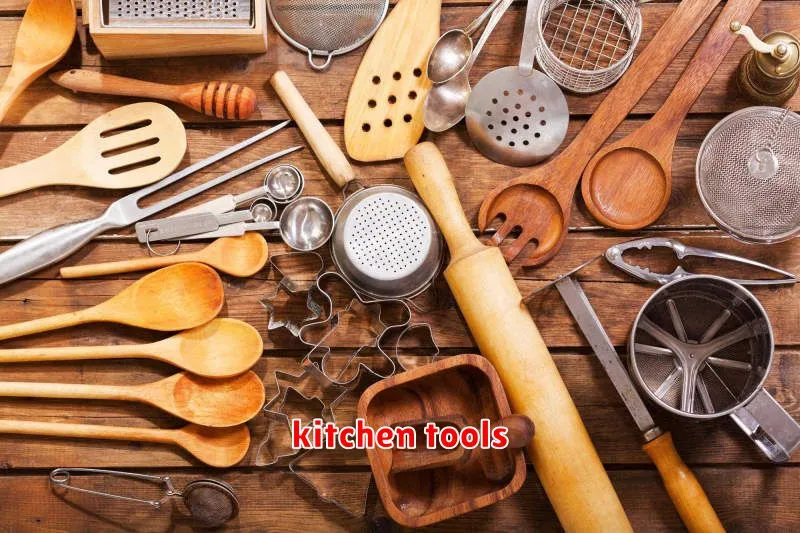Stepping into the kitchen, eager to whip up culinary masterpieces, only to find yourself staring at a drawer filled with mismatched tools and a heart sinking with frustration? Fear not, aspiring home chefs! This handbook will guide you through the essential kitchen tools that will transform your cooking game from amateur to accomplished. We’ll uncover the must-have tools every aspiring chef needs, from the basics that lay the foundation to the specialized instruments that unlock a world of culinary possibilities.
No matter if you’re a novice cook or a seasoned culinary enthusiast, having the right kitchen tools can make all the difference. Whether you’re chopping vegetables, measuring ingredients, or mastering intricate baking techniques, these tools will empower you to create delicious and impressive dishes. Get ready to equip your kitchen with the essential tools that will elevate your culinary journey to new heights!
Chef’s Knife
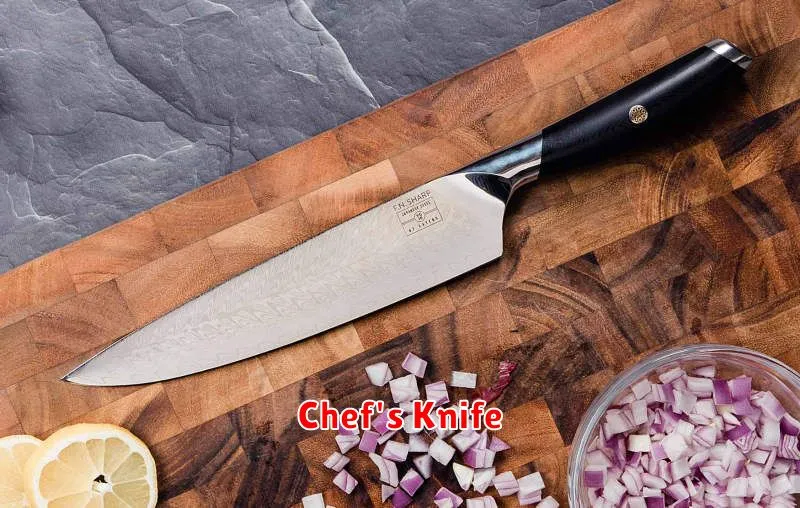
The chef’s knife, also known as a French knife, is a versatile and essential tool in any kitchen. Its long, curved blade is perfect for a variety of tasks, from chopping vegetables and slicing meat to mincing herbs and making delicate garnishes.
When choosing a chef’s knife, consider the following factors:
- Blade Length: A standard chef’s knife has a blade length of 8-10 inches. Choose a length that is comfortable for your hand size and the type of cooking you do.
- Blade Material: High-carbon steel blades are durable and hold an edge well, while stainless steel blades are more resistant to rust.
- Handle: The handle should be comfortable to grip and well-balanced. Wooden handles are popular for their durability and natural feel, while synthetic handles are easy to clean.
With proper care and maintenance, a good chef’s knife can last a lifetime. Always hand wash your knife with warm, soapy water and dry it immediately. Store your knife in a protective sheath or block to prevent damage.
Cutting Board
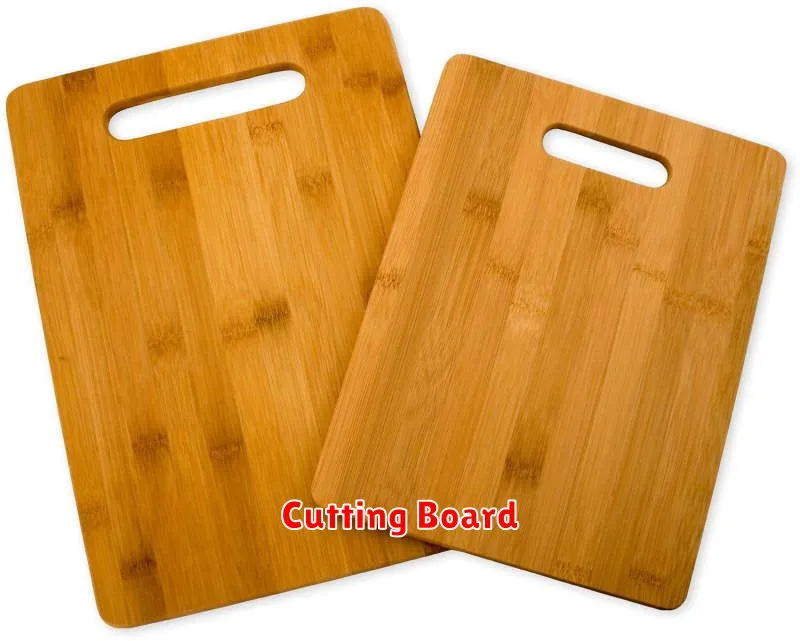
A cutting board is an essential tool for any home chef. It provides a safe and stable surface for chopping, slicing, and dicing food. There are many different types of cutting boards available, each with its own pros and cons.
Wood cutting boards are popular for their durability and resistance to knife marks. They also have a natural antibacterial quality. However, wood cutting boards require regular maintenance, including oiling to prevent cracking.
Plastic cutting boards are inexpensive and easy to clean. They are also lightweight and dishwasher safe. However, plastic cutting boards can become scratched and dull knives over time.
Bamboo cutting boards are a good alternative to wood cutting boards. They are more sustainable and less likely to warp. However, they can be more expensive than other types of cutting boards.
When choosing a cutting board, consider the type of food you will be preparing. For example, a meat cutting board should be made of a material that is easy to sanitize, such as plastic or bamboo. For vegetables and fruits, a wood cutting board may be a better choice.
It is also important to choose a cutting board that is the right size for your needs. A small cutting board is perfect for chopping vegetables and fruits, while a large cutting board is better for larger tasks, such as preparing a whole chicken.
Mixing Bowls
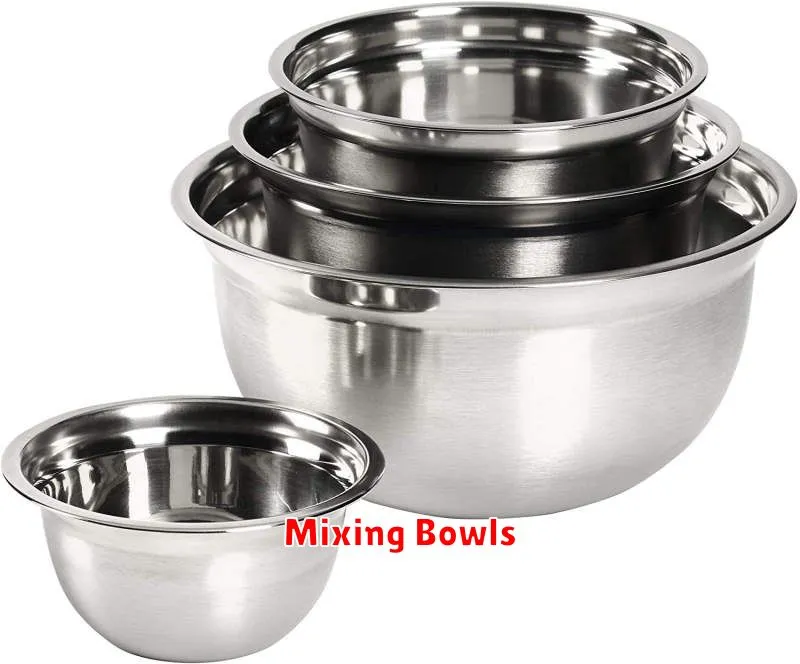
Mixing bowls are an essential tool for any home chef, regardless of skill level. They come in a variety of sizes and materials, each with their own advantages and disadvantages.
When choosing mixing bowls, consider the following factors:
- Size: Select bowls in various sizes to accommodate different quantities of ingredients. A small bowl for whisking eggs or a large bowl for mixing salad dressings are both useful.
- Material: Stainless steel bowls are durable and easy to clean. Glass bowls are also durable and heat-resistant, making them suitable for mixing hot ingredients. Plastic bowls are lightweight and inexpensive, but they can stain and scratch easily.
- Shape: Bowls with rounded sides are ideal for mixing and stirring, while bowls with flat bottoms are better for whisking and beating.
- Features: Some mixing bowls have handles, spouts, or lids, which can be helpful for specific tasks.
Investing in a set of mixing bowls in various sizes and materials will ensure you have the right tool for any recipe.
Measuring Cups and Spoons
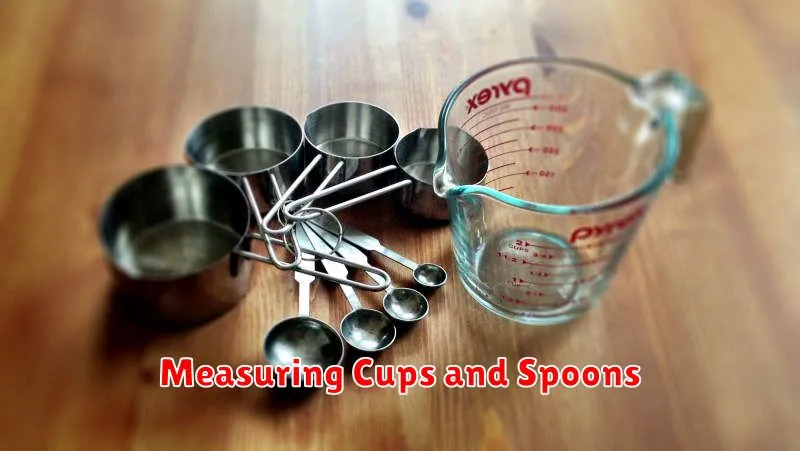
Measuring cups and spoons are essential tools for any home chef, providing accuracy in ingredient measurements for consistent and delicious results.
Measuring cups come in various sizes, typically ranging from 1 cup to 1/4 cup. They are used for measuring dry ingredients like flour, sugar, and grains. Look for cups with clear markings and a spout for easy pouring.
Measuring spoons are similarly diverse in size, with common measurements including 1 tablespoon, 1 teaspoon, 1/2 teaspoon, and 1/4 teaspoon. They are essential for measuring spices, liquids, and smaller quantities of ingredients. Choose spoons with a rounded bowl for accurate scooping.
When measuring, remember to level off dry ingredients using a straight edge or a knife. For liquids, ensure the cup is placed on a flat surface and filled to the desired measurement line.
Investing in a good set of measuring cups and spoons will pay off in the long run, ensuring consistent baking and cooking results.
Wooden Spoon
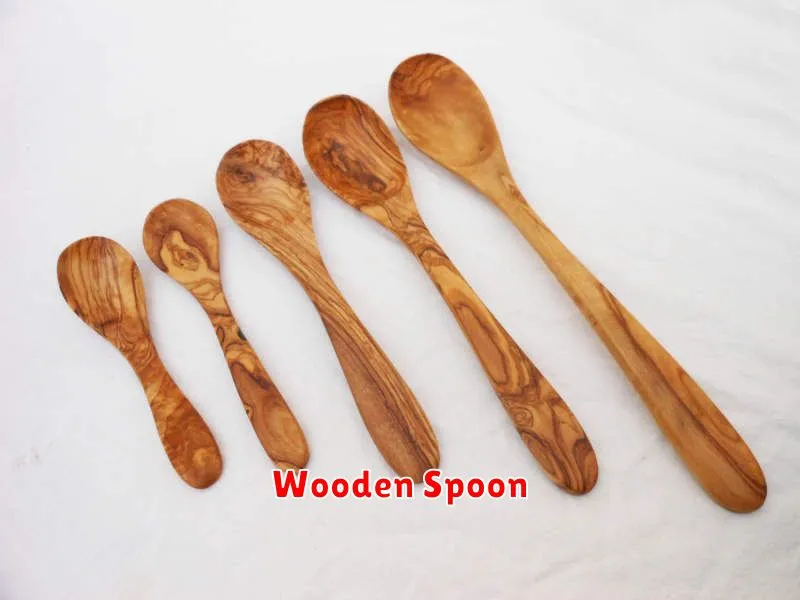
A wooden spoon is an indispensable tool for any home chef. Its versatility extends far beyond stirring soups and sauces. Its smooth surface prevents scratching delicate cookware, making it perfect for mixing batters, folding in ingredients, and scraping the sides of bowls. The natural wood construction also helps regulate temperature, preventing heat transfer that could burn delicate foods.
Beyond its practical uses, a wooden spoon can be a beautiful addition to your kitchen decor. Its warm, natural color and handcrafted feel add a touch of rustic charm. It’s also a durable choice, lasting for years with proper care.
Spatula
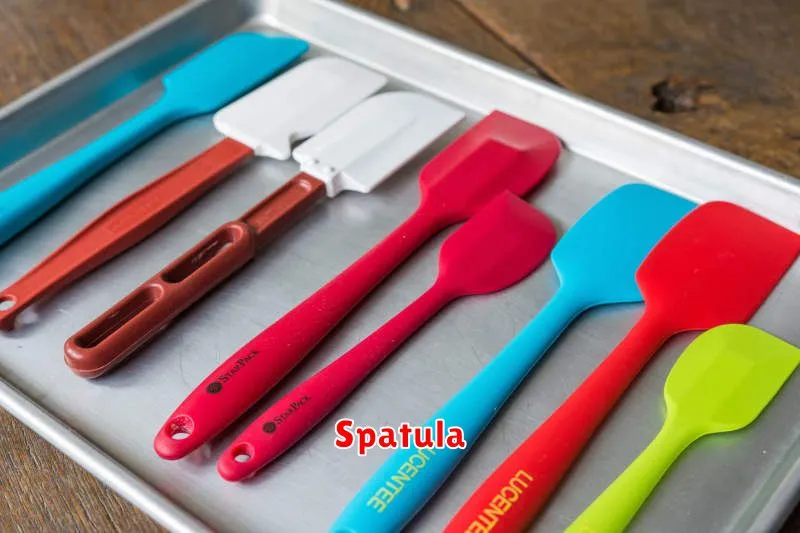
A spatula is a flat, flexible utensil with a wide, thin blade, typically made of silicone, metal, or plastic. It is an essential tool for any home chef, serving a variety of purposes in the kitchen.
Key uses of a spatula:
- Flipping and turning: Spatulas are perfect for flipping delicate items like pancakes, fish, and eggs without tearing them.
- Scraping bowls and pans: The flexible blade easily reaches into corners and crevices, ensuring you get every bit of batter, sauce, or mixture.
- Serving food: Spatulas are ideal for serving a variety of dishes, from pasta and salads to cookies and cakes.
- Spreading and smoothing: Use a spatula to evenly spread frosting, butter, or other toppings.
- Lifting and transferring: Spatulas are great for lifting and transferring delicate foods, such as cookies from a baking sheet.
Types of spatulas:
- Silicone spatulas are heat-resistant and flexible, making them ideal for cooking and baking.
- Metal spatulas are durable and heat-resistant, but can scratch non-stick cookware.
- Plastic spatulas are affordable and lightweight, but may melt at high temperatures.
When choosing a spatula, consider the materials, size, and flexibility to ensure it suits your needs. Having a variety of spatulas on hand will make your kitchen tasks easier and more efficient.
Whisk
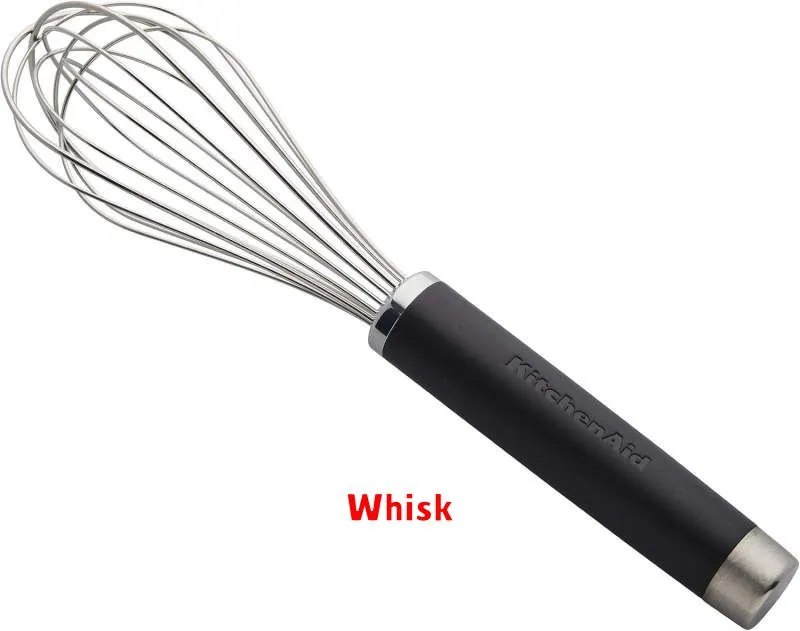
A whisk is an essential tool for any home chef. It’s a simple, yet versatile utensil that can be used for a wide variety of tasks in the kitchen, from whipping cream to incorporating air into batters and sauces.
There are different types of whisks available, each with its own specific purpose. A balloon whisk, with its rounded shape, is great for incorporating air into batters and sauces. A flat whisk, with its flat shape, is ideal for stirring and blending ingredients. A wire whisk, with its fine wires, is perfect for whipping egg whites and cream.
When choosing a whisk, consider the size and material. A smaller whisk is perfect for small tasks, while a larger whisk is ideal for larger batches. Stainless steel whisks are durable and easy to clean, while silicone whisks are heat-resistant and non-stick.
Here are some of the key benefits of using a whisk:
- Incorporates air into batters and sauces: A whisk helps to create a lighter and fluffier texture in batters and sauces.
- Blends ingredients smoothly: A whisk helps to evenly distribute ingredients and create a smooth and consistent texture.
- Convenient for stirring: A whisk is a great tool for stirring sauces and soups, especially when using a saucepan or pot.
- Easy to clean: Most whisks are dishwasher-safe, making cleanup a breeze.
Whether you’re a seasoned chef or a beginner in the kitchen, a whisk is an indispensable tool that should be in your kitchen arsenal.
Tongs
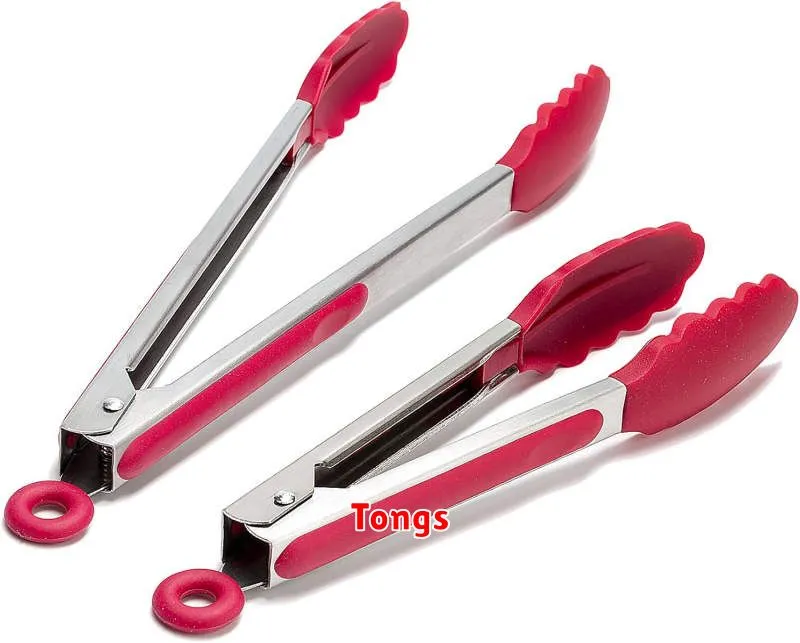
Tongs are a versatile kitchen tool that are essential for any home chef. They are used for a variety of tasks, including flipping food, grilling, serving, and even picking up hot items. Tongs come in a variety of sizes and materials, so you can choose the right pair for your needs.
When choosing tongs, consider the following factors:
- Size: Choose tongs that are long enough to reach into pots and pans without burning yourself.
- Material: Stainless steel tongs are durable and easy to clean. Silicone-tipped tongs are heat-resistant and gentle on delicate foods.
- Grip: Look for tongs with a comfortable grip that won’t slip.
Here are some tips for using tongs:
- Use tongs to flip delicate foods, such as fish or pancakes, without tearing them.
- Use tongs to grill food over an open flame.
- Use tongs to serve hot food, such as pasta or vegetables.
- Use tongs to pick up hot items, such as baking sheets or casserole dishes.
With the right pair of tongs, you can make cooking easier and more enjoyable.
Colander
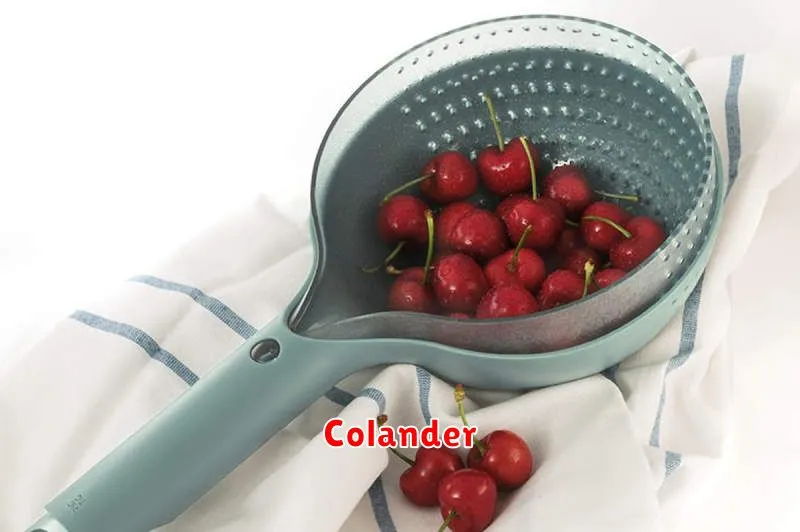
A colander is a kitchen essential for any home chef, serving as a versatile tool for draining, rinsing, and straining various ingredients. Its perforated design allows water or liquids to pass through while retaining the solid food items.
Colanders come in various sizes and materials, from lightweight plastic to durable stainless steel. Choose a colander that suits your cooking needs, considering the size of your pots and pans and the frequency of use.
Here are some common uses for a colander:
- Draining pasta: After cooking pasta, use a colander to drain the hot water, ensuring that the pasta doesn’t become soggy.
- Rinsing vegetables: Thoroughly wash vegetables under running water using a colander to remove dirt and debris.
- Straining soups and stocks: Utilize a colander to remove solid ingredients from soups and stocks before serving.
- Washing fruits: Rinse fruits like berries or grapes in a colander to remove any lingering dirt or pesticides.
With its versatility and practicality, a colander is an indispensable tool in any kitchen, simplifying your cooking process and ensuring delicious results.
Cast Iron Skillet
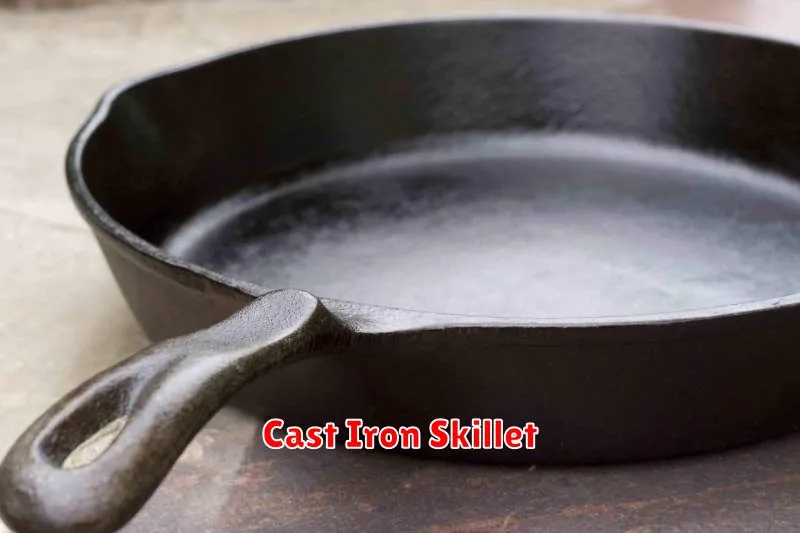
A cast iron skillet is a kitchen essential that can last for generations with proper care. It’s known for its ability to distribute heat evenly and retain it well, making it ideal for searing, frying, baking, and even roasting. Its durable construction can withstand high temperatures, and its naturally non-stick surface improves with use.
Here are some benefits of using a cast iron skillet:
- Even Heat Distribution: Cast iron heats up quickly and evenly, ensuring consistent cooking results.
- Superior Heat Retention: Cast iron holds heat for a long time, allowing you to cook food at a steady temperature.
- Durable and Long-lasting: With proper care, a cast iron skillet can last a lifetime.
- Naturally Non-stick: The seasoning layer on a cast iron skillet creates a naturally non-stick surface that improves over time.
- Versatile Cooking: It can be used for various cooking methods, including searing, frying, baking, and roasting.
Investing in a cast iron skillet is a smart choice for any home chef, offering both durability and versatility in the kitchen.

